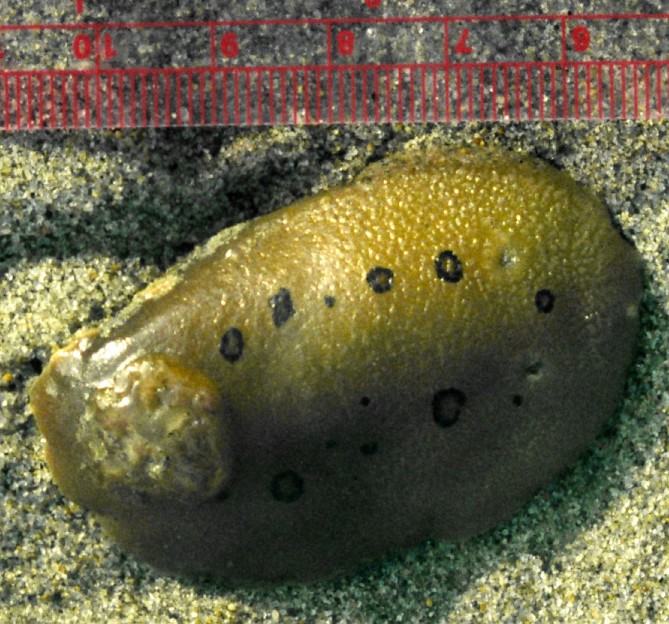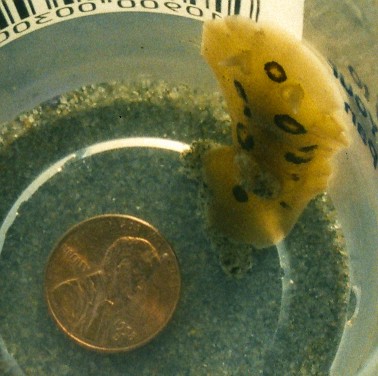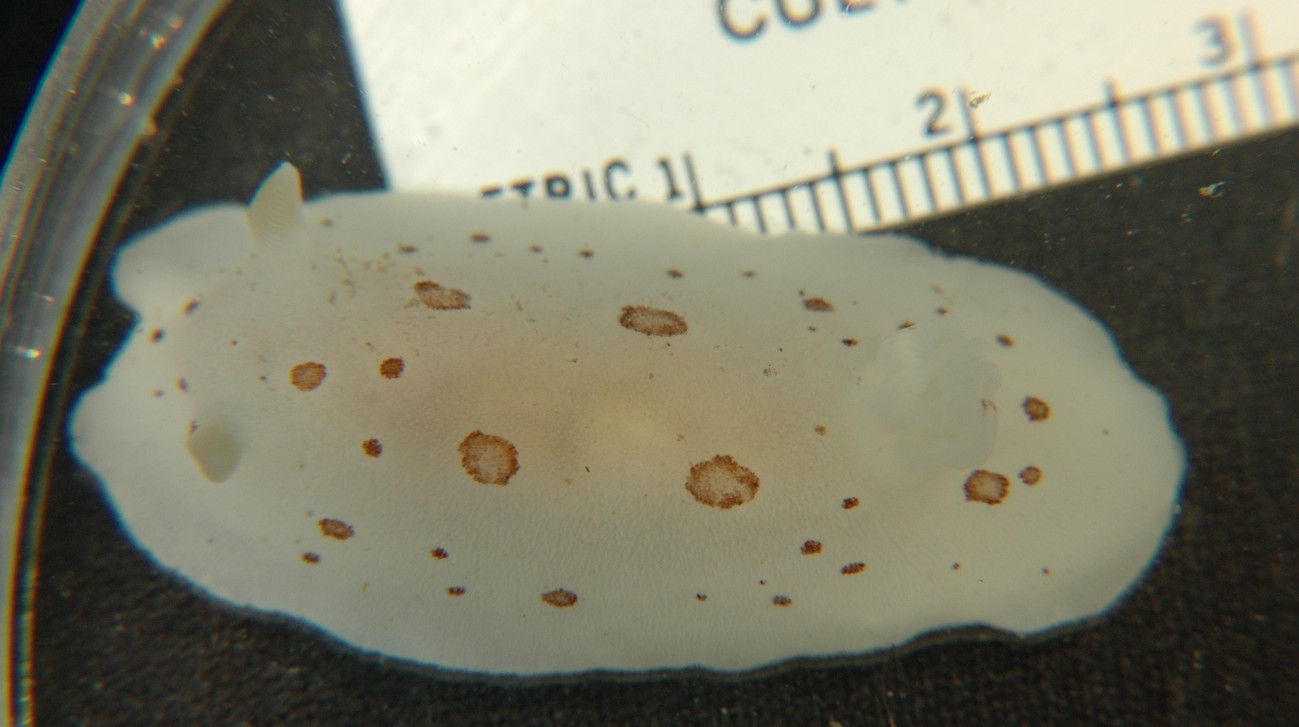Diaulula sandiegensis (Cooper, 1862)Common name(s): Ring-spotted dorid, San Diego dorid |
|
| Synonyms:
Doris sandiegensis, Discodoris sandiegensis Dialvia sandiegensis |
 |
| Phylum Mollusca
Class Gastropoda Subclass Opisthobranchia Order Nudibranchia Suborder Doridacea Family Discodorididae |
|
| Diaulula sandiegensis, Balboa Island, Ca | |
| (Photo by: Dave Cowles, May 1999) | |
How to Distinguish from Similar Species: The large dark rings make this dorid easy to distinguish. However, what formerly was considered a variant of this species is now recognized by molecular and morphological criteria as a separate species, Diaulula odonoghuei. D. odonoghuei has mainly spots (occasionally rings) on both the central part and the edges of its dorsum. The spots in D. odonoghuei both grow and increase in nunber with age, and range in count from around 23 to 234 (mean = 76). It is also similar to another species, Discodoris heathi, which also has spots instead of rings.
Geographical Range: Vancouver Island south to Puerto Penasco, Mexico
Depth Range: Low intertidal and subtidal to 35 m. Lindsay et al. (2016) state that this species is almost exclusively subtidal in the Pacific Northwest but is often intertidal from northern California south.
Habitat: Rocky intertidal, surge channels
Biology/Natural History: Feeds on Halichondria, Haliclona, Myxilla, and Petrosia sponges. The egg ribbon is narrow, white, attached in an oval spiral under rock ledges by one margin.
According to Baltzley et al., (2011), many gastropods, including this species, have a special network of pedal ganglia in their foot which assists in crawling. The two main neurons involved produce pedal peptides which elicit an increase in the rate of beating of cilia on the foot, resulting in crawling.
| Return to: | |||
| Main Page | Alphabetic Index | Systematic Index | Glossary |
References:
Dichotomous Keys:Kozloff 1987, 1996
Smith and Carlton, 1975
General References:
Kozloff,
1993
Niesen,
1994
Morris
et al., 1980
Scientific Articles:
Baltzley,
Michael J., Allison Serman, Shaun D. Cain, and Kenneth J. Lohmann, 2011.
Conservation of a Tritonia
pedal peptides network in gastropods. Invertebrate Biology
130: 4 pp. 313-324
Lindsay, Tabitha, Julie Kelly, Anton Chichvarkhin, Sean Craig, Hiroshi Kajihara, Joshua Mackie, and Angel Valdes, 2016. Changing spots: pseudocryptic speciation in the North Pacific dorid nudibranch Diaulula sandiegensis (Cooper, 1863) (Gastropoda: Heterobranchia). Journal of Molluscan Studies 82:4 pp 564-574. doi:10.1093/mollus/eyw026
General Notes and Observations: Locations, abundances, unusual behaviors:

This species is sometimes cream or even yellow. Notice how the
rings are found on the central part of the dorsum but not on the margin.
Photo by Dave
Cowles, Balboa Island, May 1999

This individual, from 10 m depth near Northwest Island, WA, is the
color pattern I more typically see. The lack of rings near the margin fit the definition of D. sandiegensis,
which is nearly exclusively subtidal at these latitudes according to
Lindsey et al., (2016). However, it was found well inland from the open
coast, in a more protected area which Lindsey et al., (2016) suggested
was the domain of D. odonoghuei. Photo by Dave Cowles,
July 2005
Authors and Editors of Page:
Dave Cowles (2005): Created original page